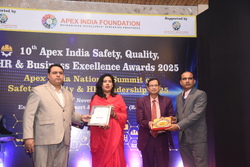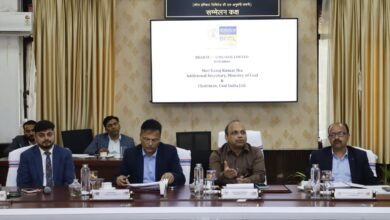Role Of Climate Change In Sikkim Floods And Road Ahead
According to meteorologists, the weather conditions were conducive for very heavy precipitation over the region on account of a low-pressure area nearby

Recently a cloudburst over the glacial South Lhonak Lake caused it to breach its embankment. Water initially breached the Chungthang dam, resulting in flash floods in multiple areas.
According to meteorologists, the weather conditions were conducive for very heavy precipitation over the region on account of a low-pressure area nearby. Yet flash floods weren’t just a result of another extreme weather event alone. Even though Climate change has played a significant role in making this weather event more extreme.
The event was predicted way back in 2021, when a study about the increasing length of Lhonak glacial lake revealed that the lake is sensitive to extreme weather events such as cloudbursts. Since it cannot be predicted when Glacier-lake outbursts (GLOFs) would happen, the only option is being prepared with proper disaster planning and mitigation.
“It was already predicted in 2021 that this lake would breach and impact the dam. There has been a substantial increase in the number of glacial lakes as the glaciers are melting due to global warming. When the glaciers advance, they erode the river bed, leading to the deepening of the river. Also, climate change has resulted in erratic precipitation, including events like cloudbursts, as we saw in Sikkim, leading to the partial breach of the moraine dam. When glaciers are eroding, they put pressure on the bedrock, producing more silt. Whenever there is flash flooding, you would witness more silt and debris flowing downhill, aggravating the destruction caused by floods and landslides.” said Dr. Farooq Azam, Glaciologist, Indian Institute of Technology, Indore.
While these glacial lakes are mostly located in remote and unsettled mountain valleys, GLOFs have the potential to impact several kilometers downstream, causing damage to human lives as well as assets and infrastructure. Glaciologists and scientists have been warning against the rapid rise in the glacial lakes. Owing to the recent developments in terms of infrastructure and human settlements within the mountainous regions of the Himalayas, the existence of glacial lakes in the high altitude of the Himalayas has become a major concern to the downstream communities.
Impact of climate change on South Lhonak Glacier over the years South Lhonak glacier is one of the fastest retreating glaciers, and the associated proglacial lake has become the largest and fastest-growing in the state. The glacier receded ~2 km in 46 years from 1962 to 2008. It further retreated by ~400 m from 2008 to 2019. There has been a growing concern now about the hazard potential of this lake, as the downstream valley is heavily populated with numerous settlements and infrastructure.
GLOFs can also be triggered by extreme meteorological conditions, especially heavy rainfall events that cause degradation of the damming moraine and lead to overfilling of the lake.
Studies have shown that GLOF risk will likely increase in the future, considering the increase in the number of new lakes, and increased triggering potential. Also, the changing patterns of exposure are an equally important driver of GLOF risk. The width of the terminal moraine that dams the South Lhonak Lake is not uniform and is thinning towards the ends. Hummocky surface of the dam indicates that it likely contains buried ice and is subject to future degradation.
We note that the moraine’s stability can change with time due to changes in the structural integrity due to the melting of buried ice, impact waves that lead to overtopping flows, extreme meteorological conditions, such as, cloudburst quickly overfilling the lake and triggering progressive erosion of the dam, etc. Continuing glacier retreats will bring the lake closer to steep and potentially degrading slopes (moraine, bedrock, and ice).
“Eastern Himalayas are dominated by Monsoon, which has over the period become more erratic and unpredictable. Snowfall is food for glaciers but it is now replaced by rainfall that too erratic.
There are more days of heavy rains and dry periods are also increasing. Rise in global warming has led to rise in glacial melt.” said Dr. Farooq Azam.
The writer of this article is Dr. Seema Javed, an environmentalist & a communications professional in the field of climate and energy




